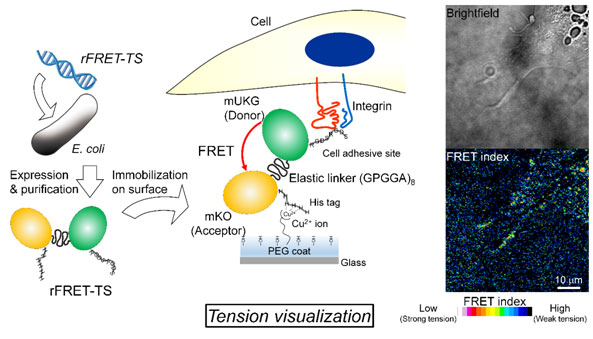Research Institute
Clarifying Cell-Material Mechanical Interactions
A Forster/fluorescence resonance energy transfer (FRET)-based molecular tension sensor was originally reported by the fusion of intracellular molecules, which has contributed to the elucidation of cell mechanotransduction. However, it is still unclear whether recombinant tension sensors can detect forces in the extracellular environment. Here, we developed a recombinant FRET-based tension sensor (rFRET-TS) and immobilized it on a glass surface. Fibroblasts seeded onto the surface likely bound to an RGDS peptide fused to one terminal of rFRET-TS, and intramolecular FRET was dominantly observed on the sensor-immobilized surface compared to intermolecular FRET. Time-lapse FRET imaging showed that rFRET-TS enabled the real-time visualization of forces between cells and material surfaces that stemmed from focal adhesion formation and actin cytoskeletal reorganization. This sensor is expected to be useful for clarifying cell-scaffold mechanical interactions by its insertion between protein molecules of the scaffold, which will provide clues for the control of cell behavior in/on scaffolds.1)

Publications
- Kambe Y, Kojima K, Tomita N, Tamada Y, and Yamaoka T. Journal of Materials Chemistry B, 4, 649-655 (2016)
last updated:2021/10/01
